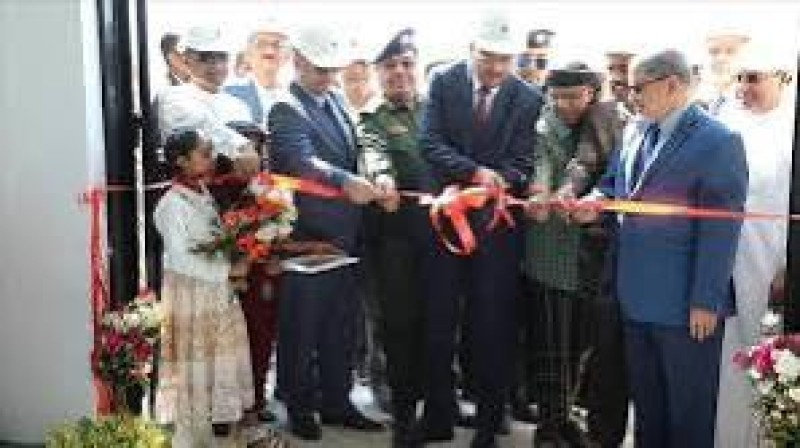While the Obama administration was fighting ISIL, Al Qaeda was regrouping in Yemen.
By Michael Crowley
For the last six months, U.S. officials have fixated on the threat of terrorism in Iraq and Syria as militants there seized territory, massacred innocents and beheaded hostages for the world to see.
Now Washington has been reminded that an equally sinister threat still festers hundreds of miles away – in Yemen.
That became clear on Wednesday, when a leader of Yemen-based Al Qaeda in the Arabian Peninsula claimed credit for last week’s attack that killed 12 people at the Charlie Hebdo newspaper in Paris.
As recently as two years ago, U.S. drone strikes had the Yemeni branch of the organization responsible for the 9/11 attacks on the retreat. But the U.S.-led campaign against AQAP now appears stalled, and experts are asking whether the administration’s policy there has failed.
AQAP’s claim of responsibility “serves as a stark reminder that while ISIS has been the center of media attention over the past several months, the most imminent threat to the West continues to emanate from Al Qaeda,” Rep. Adam Schiff, the top Democrat on the House Intelligence Committee, said in a statement Wednesday using an acronym for Islamic State in Iraq and the Levant, or Syria.
But at the moment, the campaign to defeat ISIL is far more extensive and vigorous than the effort to crush AQAP.
That’s despite President Obama’s claim, in a September 10 speech explaining his strategy to defeat ISIL, that Yemen is an example of a place where the U.S. has “successfully” pursued a counter-terror strategy that combines air power with friendly local forces on the ground.
Four months later, that strategy is on pause — and its success in doubt. Since mid-September, the U.S. has conducted just three drone strikes in Yemen, down from 19 last year, according to data compiled by the New America Foundation. And that was a fraction of the 2012 peak of 56 drone and air strikes.
Meanwhile, political turmoil has paralyzed Yemen’s government and derailed its U.S.-backed counterinsurgency campaign against the Al Qaeda offshoot. In October, Shiite rebels captured the capital city of Sanaa and staged a de facto coup that blindsided Washington. “The [Yemeni] government is basically impotent” as a result, said Stephen Seche, who served as Obama’s first ambassador to the country.
That has set back the Yemeni military’s fight against AQAP, which opposes the government and has sought to capture territory within the country. The Sunni radical group also despises the Shiite Houthi rebels.
“The long-term prospect for building on the progress we had before with the government of Yemen is in peril,” added Daniel Benjamin, a former State Department counterterrorism official now at Dartmouth College. “And that is a scary thing.”
“Al Qaeda is completely emboldened,” said Adam Baron, a visiting fellow at the European Council on Foreign Relations, who recently returned from two years living in the country. That point was underscored on the day of the Paris shootings, when an AQAP car bomb killed 38 outside a police academy in Sanaa. “The U.S. is facing a deep crisis,” he added.
When President Obama took office, Yemen wasn’t a crisis, it was a second-tier national security concern in a country few Americans could find on a map. Although Osama bin Laden was born in the impoverished desert country on Saudi Arabia’s southern border, Al Qaeda’s activity there was limited and locally focused. George W. Bush oversaw just one drone strike there during his presidency, in 2002.
That changed soon after Obama’s January 2009 inauguration, when Al Qaeda’s Saudi and Yemeni branches merged. The group shocked Washington into awareness later that year, when an AQAP operative, Umar Farouk Abdulmutallab, nearly brought down a Northwest Airlines jet over Detroit on Christmas Day with a bomb sewn into his underwear.
That was just the beginning. There was also an October 2010 attempt to hide explosives in printer cartridges on a cargo jet; a May 2012 effort to place another suicide bomber on a passenger plane; and a summer 2013 plan that forced the closure of 19 U.S. embassies.
By the end of 2012, Obama had overseen 71 strikes against suspected AQAP operatives. In 2012 and 2013, the U.S. struck Yemen even more frequently than it did Pakistan.
(WATCH: Obama: Yemen an example successful counter-terror strategy)
One September 2011 strike hit an especially prized target: Anwar al-Awlaki, an American-born cleric whose online English language propaganda videos have inspired would-be jihadis in the west. They include Maj. Nidal Hasan, who shot and killed 13 people at the Fort Hood Army base in November 2009.
Awlaki also motivated the Paris gunmen, one of whom told a French television reporter during last week’s attacks that he had met personally with the cleric and was financed by him. Yemeni sources have reportedly said the gunmen visited Yemen in 2011 and received military training there from AQAP.
Even after Awlaki’s death, Obama’s campaign against AQAP — largely directed by then-White House counterterrorism chief John Brennan, a former CIA Yemen analyst who focused obsessively on the country after the Christmas 2009 bomb scare — continued to escalate.
In 2012 Yemen’s military began a campaign to dislodge AQAP from provinces where it had seized control.
“There was a full-on conventional war happening, and the United States was using drone strikes as an auxiliary air force to kick the dickens out of AQAP,” says Christopher Swift, an adjunct professor of national security studies at Georgetown University who has studied Yemen closely.
That period was the likely basis for Obama’s September 10 claim that a “strategy of taking out terrorists who threaten us, while supporting partners on the front lines, is one that we have successfully pursued in Yemen and Somalia for years.”
The U.S. may now be a victim of its own success, however. That offensive forced AQAP from its strongholds, scattering it more widely and making its members harder to locate and target.
The Al Qaeda operatives are also now more closely intermingled with civilians, making them harder to hit under more restrictive guidelines for drone strikes Obama announced in May 2013 after warnings of rising blowback from civilian casualties.
That problem was tragically illustrated in December 2013, when a drone strike targeting a suspected Al Qaeda figure hit a convoy en route to a wedding, killing 12 and wounding 15. Human Rights Watch later concluded that “some, if not all those killed and wounded were civilians.”
Yemen is stupidly dangerous. You can see the administration’s reluctance to get engaged on the ground.
A senior administration official declined to discuss drone strikes, though he said that the Yemeni government and military “continue to partner with us in countering the shared threat from AQAP.”
But the official added that U.S. policy towards Yemen — still heavily managed by Brennan, now director of the CIA (which conducts many of the strikes) — goes beyond counter-terror operations.
“Our policy on Yemen on security is much wider than that,” the official said. “We also are very focused on economic reform and development there, humanitarian aid. We really do have a comprehensive approach. Not this kind of narrow focus that people sometimes talk about when it comes to Yemen.”
Indeed, the U.S. has spent more than $800 million on Yemen since November 2011, when popular protests triggered by the Arab Spring ousted the country’s ruler of more than 33 years, Ali Abdullah Saleh.
Several experts cautioned that much of the U.S. aid is lost to corruption, however, and that development projects are almost impossible because security outside the capital makes travel too dangerous for westerners.
Not that the capital itself is safe. AQAP has repeatedly attacked the U.S. embassy in Sanaa. On November 8, the group said explosives planted to kill the U.S. Ambassador, Matthew H. Tueller, were discovered just before Tueller passed by.
To some, the situation sounds reminiscent of Afghanistan—where Obama has chosen not to pursue a long-term nation-building mission. To others, it’s even worse.
“Yemen is more dangerous than Afghanistan,” says Swift, who has traveled there often. “Yemen is stupidly dangerous. You can see the administration’s reluctance to get engaged on the ground.”
Brennan’s successor at the White House, Lisa Monaco, visited Sanaa twice last year. And President Obama spoke in October to Saleh’s successor, Abdo Rabu Mansour Hadi, to affirm Washington’s support for his government.
But fear of another Afghanistan has prevented the U.S. from developing the knowledge and contacts required to manage the country’s political chaos and eventually root out Al Qaeda, said Nabeel Khoury, a deputy U.S. ambassador to Yemen from 2004-2006.
“There has been a sort of phobia in this administration about repeating the Iraq 2003 and Afghanistan situations,” Khoury said. “When you sacrifice diplomacy and democracy for security you wind up getting neither.”
Khoury said the situation may get worse for the U.S., given that Washington has no diplomatic ties with the rebel Houthi Shia group that still occupies the capital.
Much as ISIL has rallied Sunnis to a sectarian fight against Shiites, AQAP has used the rise of the Houthis — who observe an offshoot of Shiism — to appeal to their Sunni brethren in the country. That could produce a sectarian war, creating the sort of chaos on which terrorists feed.
“The Houthi rebel crisis in Yemen has breathed new life into Al Qaeda’s Yemeni branch, providing AQAP with a wide power vacuum in which to operate,” the Foundation for the Defense of Democracies’ Oren Adaki wrote for The Long War Journal blog.
“Yemen is a failed state right now,” Khoury said. As for the Obama administration, he added, “I don’t think they have a vision.”




